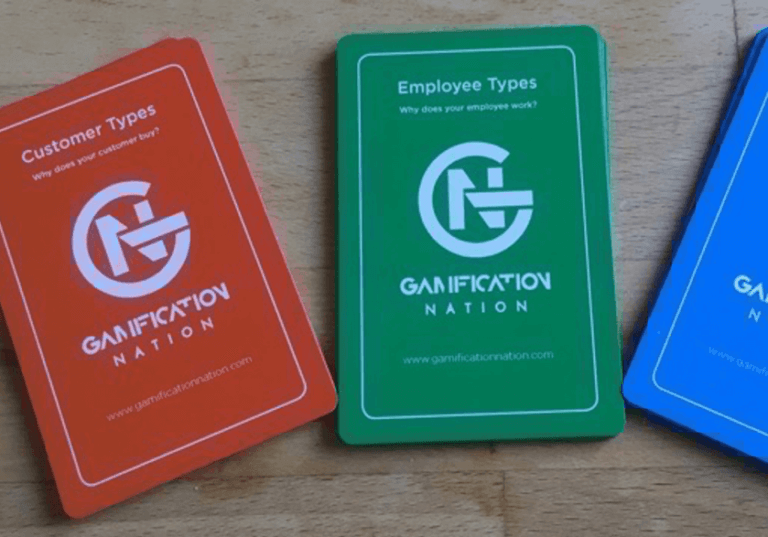Gamification trends for 2023
2023 like some of the previous years has an uncertain feel to it. Nobody knows for sure or dares to say whether Covid-19 is finally manageable, or we are simply accepting it will be around us to be managed. The global economic outlook is not positive but yet on the ground not all is bad, so it is a confusing year in many ways.
Mine started with Covid and a massive migration project which had me without space to think, research, and write. Hence the really late post on trends, which some of you have been asking and waiting for. I appreciate you reading my posts and letting me know that you missed them.
Generative Artificial intelligence
With ChatGPT becoming a massive hit at the tail-end of last year and many experts raving about what it will do to revolutionise industries, we can’t ignore this one. I have to say, I predicted that machine learning and artificial intelligence would grow pretty much since 2020, so it doesn’t come as a surprise. And we could argue that recommendation engines have been the first use case in the gamification space, and they are around for nearly a decade. They only get better over time as we feed them more choices and data.
Generative AI generates new content based on instruction commands based on a data set it was already trained on, aka existing content that it can easily find or was fed specifically with the purpose of creating new material. It can create graphics, and text and write code insofar as it has been done before.
In terms of its application to gamification and serious games, it can help speed up the design process for narrative and graphics. For the time being only a select few engines and game companies are actively experimenting with generative AI such as Roblox, Beamable, Unity, and Unreal. At least they are the ones we know of publicly. Saying that generative code in games has been around for some time and it is what powers some game developments. I would expect there to be more experiments to be taking place in many studios. Microsoft invested heavily in this, but then so have IBM, Google, and other technical juggernauts.

My expectation is that we will see many use cases and application flooding onto the market with equal hype and an ‘all will change’ message. As an industry, we need to test, learn, play, and experiment and see where the boundaries of possibility, command, and creation can come together. I instructed my team to play and test what it can and can’t do. So far, we are still on the fence to say whether it is great or not. The ‘not’ is mostly driven by the ethical and art considerations of IP ownership.
Artificial intelligence comes with a health warning too, if we rely on the existing content openly found available and we already know a lot of biased views have come out of AI models then we may need to verify the output to ensure it fits our messaging and re-adjust it accordingly. Just think back to the failed bots by some of the big names in the industry.
I would expect that we will all eventually have an AI co-worker which is more efficient than any human to consume large data sets and come out with an analysis or report. But it will also lack empathy and human sensitivity and may have biased views on society originating from its code, the data sets, etc.
Plagiarism and ethical adaptation of other people’s original work are something to be considered. Some artists are taking action to protect their copyrights. In games, we have had a lot less protection from the outset, so I would expect that apart from blatant rip-offs most creations may be seen in a similar light to reskins of older games. Either way, it will only ever be as good as the instructions and the data sets it starts from.
The crypto-winter fall-out
Last year the trends were dominated by blockchain, DAO, NFTs, Play-to-earn games, and metaverses. This year it is nearly like it is a bad omen to still mention them. But if we think back to where gamification started, I will say that it is simply a period where real use cases are being built and designed and the hyped projections are fading.
The main reason for the quick fall-out-of-love with these areas of technology is the rather public failure of some of the crypto exchanges, and the high level of fraudsters and scammers playing under the guise of anonymity claiming protection under the openness of the blockchain ledger. Yet it takes investigators a lot of effort and time to find the culprits who are defrauding enthusiasts. The fact that there are whole new subsets of vocabulary appearing to describe scams, should be enough of a warning.
Where does that leave the ones with good intentions?
Well in my view, the bona fide good people in this space are hunkering down and developing real use cases and proving the worth for both b2b and b2c. I think the hype temporarily was dominated by more money than sense and people with crazy expectations on returns. We may well see the same in generative AI going on now.

We can see that more traditional game companies and app developers are finding their way into building meaningful experiences that actually attract users. We have identity verification solutions that benefit from blockchain, in our gamification space, the open badge framework is being applied to time-stamped tokens.
I think some of the larger players like Facebook or Meta misread the followers and their eagerness to enter and dominate the space went counter-opposite to the intention of blockchain and many of the early converted fans. So, these companies are feeling the fallout.
However, I stick with my view from last year that the metaverse will combine more and more of what we already use from VR and AR into immersive digital experiences. The metaverse will combine a virtual world and real life – for me, it is the ultimate conversion of game technology and our life both digital and non-digital coming together. The metaverse offers users the ability to socialise, work, learn, and play all in one place. It is an immersive experience that blurs the line between reality and digital reality (AR & VR).
The debate between web 2.0 and web 3.0 has finally received a bit of a blow with the energy crisis and climate change activists questioning the reality of having multiple servers powering a distributed chain. I also heard web 4.0 being mooted which apparently incorporates wearables and internet of things devices. Either way, connectivity will be the thing that is required to make any extended and mixed reality work.
I personally believe that the crypto-winter and revisiting of human values were probably necessary to create a space that is ultimately better thought through rather than hype-driven shoddy examples of what might be possible.
I am hopeful that metaverses, play-to-earn games, and tokens will evolve into more meaningful experiences with the input of some of the great designers and developers that grew up with games and game technology.
When we look at trends, I think this one is in hibernation and will come back once the economic uncertainty starts to lift. There is significant money invested and some large players are also actively working on projects that will touch this space.
My prediction is that:
- Metaverses will find a real use case with active users or several purpose-led ones, but digital real estate may not be the currency. We already see digital offices and schools, product launches and storefronts, etc as emerging applications with true value.
- NFT or ownership tokens are already and will more and more have real value and will actually become something to behold rather than a hollow status symbol.
- Play-to-earn games will also become less grind and reward but more immersive and fun to actually play.
Extended and mixed reality
It feels a bit as if augmented reality and virtual reality are on the trends list for a long time and maybe they are edging out of the trend landscape. The trend of blending realities or extending reality with augmented or virtual reality remains a big trend. I also believe we are nowhere close to having achieved the full potential of this technology.
Digital twinning is a growth area for engineering and innovation. I love the space of digital twins where complete replicas of production environments, complex engineering designs from cars to airplanes to bridges, tunnels, etc, and others are being worked on together from multiple countries and disciplines. Currently, this is reserved still to those with deep pockets and deep technology knowledge. My expectation is that the price will come down and more digital twin tools will enter the market.
Personally, I believe gamification of some of the development, experimenting, and research here, could potentially speed up innovation. Because the nature of the projects tends to be very secret, we also don’t know for sure if they may already use game elements to rank, rate, and improve items. What we do know is that a lot of this is powered by game technology.
Will this be the year when holography finally becomes part of the XR mix?

I think that holography will be the final game changer in all things extended reality, but equally for metaverse in work and life. So far only research labs have been actively experimenting with it. But because of the focus shifting to virtual reality because it was easier to implement due to the closed environment.
For me holographics is the wishlist item of the future trends. I haven’t seen many applications and where they exist they are kept well under wraps. My hope is that this year we see them more publicly accessible and more companies being able to test the boundaries of this technology.
No code and low code games
The no code or low code movement has been around for a long time and permeated some sectors more than others. We are now seeing more of this in the game space, sometimes in conjunction with AI or in subscription-based products. The capability of the no-code tools has now developed to be good enough for enterprise use, which is why we are seeing some B2B applications popping up from integrators to no-code game engines.
From a business point of view, the question is one of time and resources. Will many companies have the staff to allocate to use these tools and are they a time saving or a costly productivity blocker. Most tools have a learning curve and when the UI designers get that right and on target for their product, we will see adoption rising.
Return of early adopters seeking real value
Gamification seems to have finally made it through the unhappy stage of being the unfavourable kid on the block. We are seeing early adopter who tried the very shallow version of points, badges and leader boards return but as educated buyers. With them they bring a few of the sceptics that have been on the fence or conservative laggards in marketing terms.
The conversations from a sales perspective is much more around identifying a solution that truly fits the organisation and not simply focused on quick band-aids to patch up a much deeper problem. I mean if you ever tried to improve engagement with a catch-all one size fits all solution, you will understand what I mean. Engagement needs to be defined and explored in the context of the client and only then can you start thinking about the solution.
With educated buyers, we also see digital agencies referring business to specialist companies like ours to really make the difference they haven’t been able to achieve with quick fixes. I personally believe this is a great trend and I hope that we can serve many of the early adopters to have their projects finally deliver. I also think it is good for the industry to see more mature buyers entering the market. It helps all of us level-up the game. High time if you ask me.

Market growing slower
The market overall is said to be still growing but at a much slower rate than in the previous decade. Previous growth rates had the market growing at 20-30% and now the latest research is predicting a growth rate range between 12-25%.
The gamification market size was valued USD $9520.42 million in 2022 and is expected to expand at a CAGR of 12.66% during the forecast period, reaching USD $19469.21 million by 2028. (According to markets and markets research).
The business research company on the other hand expects a much higher growth rate and also a much higher valuation of the market. The global gamification market size grew from $14.87 billion in 2022 to $18.63 billion in 2023, at a compound annual growth rate (CAGR) of 25.3%. The gamification market size is expected to grow to $46.44 billion in 2027 at a CAGR of 25.6%.
From reading many research report summaries, I have to say it is always fascinating to read what is considered gamification and what isn’t and the very lack of clear definition for the industry. But I guess that is no different than asking a whole bunch of gamification industry people to define gamification and its boundaries. Either way even the worst predictions still indicate some growth, despite recession and war in some regions.
The biggest market is still North America and the highest growth rate is also still Asia-Pacific, where the growth of the mobile market remains a driver for growth.
In an economic slowdown, frivolous nice-to-have tools and projects tend to make way for the more essential, bottom-line-hitting expenditures in business. My hope is that at this stage gamification has proven its value and can indeed weather economic turbulence based on the fact that when done right it will improve results in conversion, retention, and productivity.
With an economic slowdown in mind, typically spending for internal employee-facing tools tends to become harder to come by unless it was already budgeted for. So, I would expect to see a decrease in high-cost projects facing employees such as learning related, or employee engagement related. Here the lower end of the cost spectrum will do better. However, even in a recession marketing and sales will be able to unlock a budget in a corporate setting and they will be hunting for effective conversion resources that will make them stand out from the crowd.
Growth sectors in the b2b market that may be less budget sensitive are the obvious ones that are making good money such as energy and pharmaceuticals. Equally a lot of budget is going to climate-related projects. In the b2c market, more fun applications for augmented self and self-improvement will remain popular.
Final Thoughts
I took my time to write this trend review and analysis as I wasn’t sure how the market would turn out. I am generally cautiously optimistic about the growth of the industry although I expect there to be great outliers on either side of the spectrum in terms of performance. Whether it is high growth or a major decrease, my expectation is that this year geopolitics and local economics may be the great differentiator. Unlike Covid-19 which for the gamification market was a great global accelerator for all things online gamification and quick-to-deploy solutions, this year we will see a much more diversified trend.
Depending on where we end up economically and whether we can stay clear of an all-out world war, we can see the trend for more digital cohabitants continuing whether they will take the shape of gamification bots, game-based avatars, and metaverses or simply a very smart AI will become a question of taste and preference. Rather than a case of whether or not it will happen. Just like with all games, you will have some that you will enjoy and tend towards and others that you would rather avoid. My view is that technology for productivity, loyalty, engagement and retention, often what we design for in gamification, will continue to grow and become better and more diverse.
Let’s also hope that we can return to a peaceful world and more collaboration rather than boss fights for whatever other objective.
If you want to read up on what I thought were trends in previous years the links are below:
https://gamificationnation.com/gamification-trends-for-2021/
https://gamificationnation.com/gamification-trends-for-2020/





